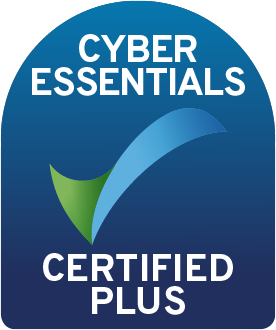So much of the content and information we consume daily is now gathered using our smartphones. Whether it's reading the news, scrolling through social media, or watching videos, our mobile devices have become an extension of us and an essential part of everyday life. As mobile devices are so ingrained in our day-to-day lives, it only makes sense for your e-learning courses to be accessible through them too.
Giving learners the option of completing their learning on a mobile device can be the difference between choosing one course over another or even favouring your business or organisation over a competitor. Providing users the ability to learn anywhere, whilst on the go and autonomously, using a device that they are familiar with and comfortable with, makes great business sense. Making your e-learning course more accessible means users are more likely to be engaged and to complete it.
Mobile-first learning design significantly improves training completion rates by making learning more accessible, engaging, and convenient for today’s workforce.
But to truly make mobile learning work, you need more than just mobile-compatible content. You need a well-thought-out strategy that combines responsive design, the right content formats, and a modern LMS platform that supports seamless mobile functionality.
TL;DR: Mobile learning benefits and best practices
-
Mobile learning offers flexible, on-the-go training for today’s workforce.
-
Benefits include increased accessibility, engagement, and support for remote learning.
-
Best practices include using responsive design, microlearning, offline access, and simple UX.
-
Choose an LMS that enables downloadable SCORM content, SSO, and strong analytics.
-
Hubken’s LMS solutions (Totara and Moodle) are mobile-optimised to support modern L&D strategies.
The benefits of mobile learning
- Increased accessibility - Mobile learning empowers users to learn when and where it suits them, supporting asynchronous training and reducing the barriers posed by time zones or office hours.
- Higher engagement and completion rates - By providing training via devices learners are already familiar with, mobile learning makes training more approachable, often leading to higher engagement and course completion.
- Supports remote and hybrid workforces - As hybrid work continues to be the norm for many, mobile-friendly learning ensures that employees can stay aligned with learning goals from anywhere.
- Facilitates microlearning - Smartphones are ideal for bite-sized learning, meaning employees can access short bursts of microlearning content when they need it.
Best practices for effective mobile learning
1. Prioritise responsive design
Most people have experienced the inconvenience of accessing a website on their smartphone that clearly has not been developed with mobile users in mind. It may be that you have to zoom in or out to see anything, swipe left to right to read text, navigate through oversized and blurry images that often overlap important text. Not only is this a deterrent from returning to the website but it also undermines the validity and quality of the business or organisation that the website is representing.
This is something you obviously want to avoid when facilitating a mobile friendly e-learning platform. As long as you’re using a responsive design, you can easily achieve this. One of the key points to consider is screen size, ensuring that content adjusts accordingly so it all fits within the screen without the need to scroll left and right or zoom.
Make sure the content is mobile optimised, for example text size or quality of graphics. Learning content that relies on video needs to work smoothly, so making sure that your LMS has the appropriate playback software to ensure this is vital. When it comes to video and using the platform in general, it’s preferable to allow for orientation options as it means users can read or view content in portrait or landscape.
Hubken tip: Try testing out your e-learning platform on various mobile devices to make sure that everything looks right and the content adjusts accordingly to ensure everything can be easily viewed.
2. Optimise content for mobile
When we consume information using our smartphones, it’s typically in short bursts. Social media consists of short videos under 3 minutes long whilst news apps tend to feed us the ‘top 10’ stories including a brief summary so that we can be updated in a matter of minutes. Adapting your content so that it conforms to this standard will make it easier for the user to digest as it’s what the modern learner will be used to.
Long pieces of writing don’t work as well on a mobile device as they do on a PC/laptop, it’s harder to read and can look dense or cluttered. Try to keep text short and concise without simply cutting down pre-existing content. It’s worth considering microlearning for mobile devices, as it is well-suited to mobile learning. This learning technique typically consists of short bursts of content which usually take under 15 minutes to consume.
3. Include engaging, distraction-resistant content
One of the negative sides to mobile learning is that learners can easily get distracted. A text message notification might pop up, or a learner may be tempted to switch over to a social media app instead. Users are more likely to stay focused and want to stay on the learning platform if the courses and lessons are engaging enough.
Think about what learners typically find entertaining whilst on their smartphones and try to incorporate some of that into your learning programme. Look to include videos, and infographics or add a gamification element with fun quizzes.
4. Keep the user experience simple
It’s important not to overcomplicate your learning platform when it comes to mobile learning. As mentioned above, keep in mind the size of the screen and steer clear of ‘clutter’. Map out the journey of the user and only include the necessary elements.
Make sure everything that is important to the learner is easily accessible with a navigation bar. This could include their user profile, enrolled courses, notifications or downloaded content. It’s best to keep a user’s current learning on the home page so it’s readily available and easy to access.
Hubken tip: Make it even easier for mobile users to access the learning platform by allowing single sign on support.
5. Enable offline learning
A functionality that comes as standard with most entertainment or education apps, such as Spotify or Audible is the ability to download content for offline use. One of the biggest benefits of mobile learning is that users can learn anywhere at any time; however, this isn’t always the case if they need internet access to complete lessons. Enabling users to learn offline takes the flexibility of mobile learning one significant step further.
A modern LMS will allow you to enable users to download SCORM activities to complete offline. An LMS such as Totara Learn offers a Totara Mobile app, which includes a custom-built offline player for SCORM activities, meaning learners can complete courses offline and then submit their answers and completion once they’re back online.
6. Use mobile analytics to inform L&D strategy
Using analytics, you can track user behaviour across your ‘standard’ e-learning platform and your mobile platform. It’s worthwhile comparing data to see how results and e-learning practices might differ across these platforms.
Use this data to identify methods that resonate in a mobile setting, adjust strategy and employ mobile application data for faster learning innovations. Take into account the type of user that is responding well to mobile learning and look at ways to retain them and encourage others to show similar levels of engagement.
With the data you gather from LMS analytics you can look to adapt learning content to the type of user who is favouring one learning platform over the other. This may be based on age, job role or chosen course subject if they’re a student.
Get more from mobile learning with Hubken
Without the right LMS, facilitating mobile learning can be complex and without the right LMS provider, it may be difficult to understand the full range of features that your LMS is capable of and, in this specific instance, how to get the most out of your LMS’s mobile learning features.
As a Totara Platinum Alliance Partner and Moodle expert, we design and deliver high-quality e-learning solutions for leading UK businesses and organisations, building lasting relationships so that they can realise the full potential of their learning and development projects. Chat with one of our experts today to find out how you can get the most out of your LMS and build the best mobile learning platform to suit your L&D goals.
Mobile Learning FAQs
What is mobile learning and why is it important?
Mobile learning refers to accessing educational content via mobile devices like smartphones and tablets, typically via an LMS app. It supports flexible, remote training and is essential for today’s hybrid workforces, enabling learning anytime, anywhere.
What are the main benefits of mobile learning for organisations?
Key benefits include increased learner engagement, better accessibility, higher completion rates, and compatibility with remote work. It also supports microlearning and just-in-time training methods.
How can an LMS support mobile learning?
A modern LMS like Totara or Moodle supports mobile learning with features like responsive design, downloadable content for offline access, and real-time analytics. Platforms like Totara even offer a mobile app with offline SCORM player functionality.
How does mobile-first learning design improve training completion rates?
Mobile-first learning design improves training completion rates by making learning more accessible, convenient, and aligned with how people consume content today. By prioritising mobile devices, organisations create learning experiences that fit seamlessly into daily routines, allowing learners to engage with training on the go. This flexibility, combined with intuitive, responsive design, leads to higher participation and significantly increased course completion rates.
How do you ensure offline learning capability in mobile LMS platforms?
To enable effective offline learning, mobile LMS platforms should offer key features like content downloading, offline access, and progress syncing. Learners should be able to download SCORM courses, assignments, and other materials directly to their devices, allowing them to continue learning without an internet connection. Once back online, the platform should automatically sync progress and assessment data to ensure seamless tracking and reporting across devices.

Explore HubkenCore – our unique SaaS LMS offering
Ready to see how our new LMS bundled solution is revolutionising how you purchase an e-learning solution?
.png?width=1080&height=150&name=Slim%20blog%20CTAs%20(12).png)



